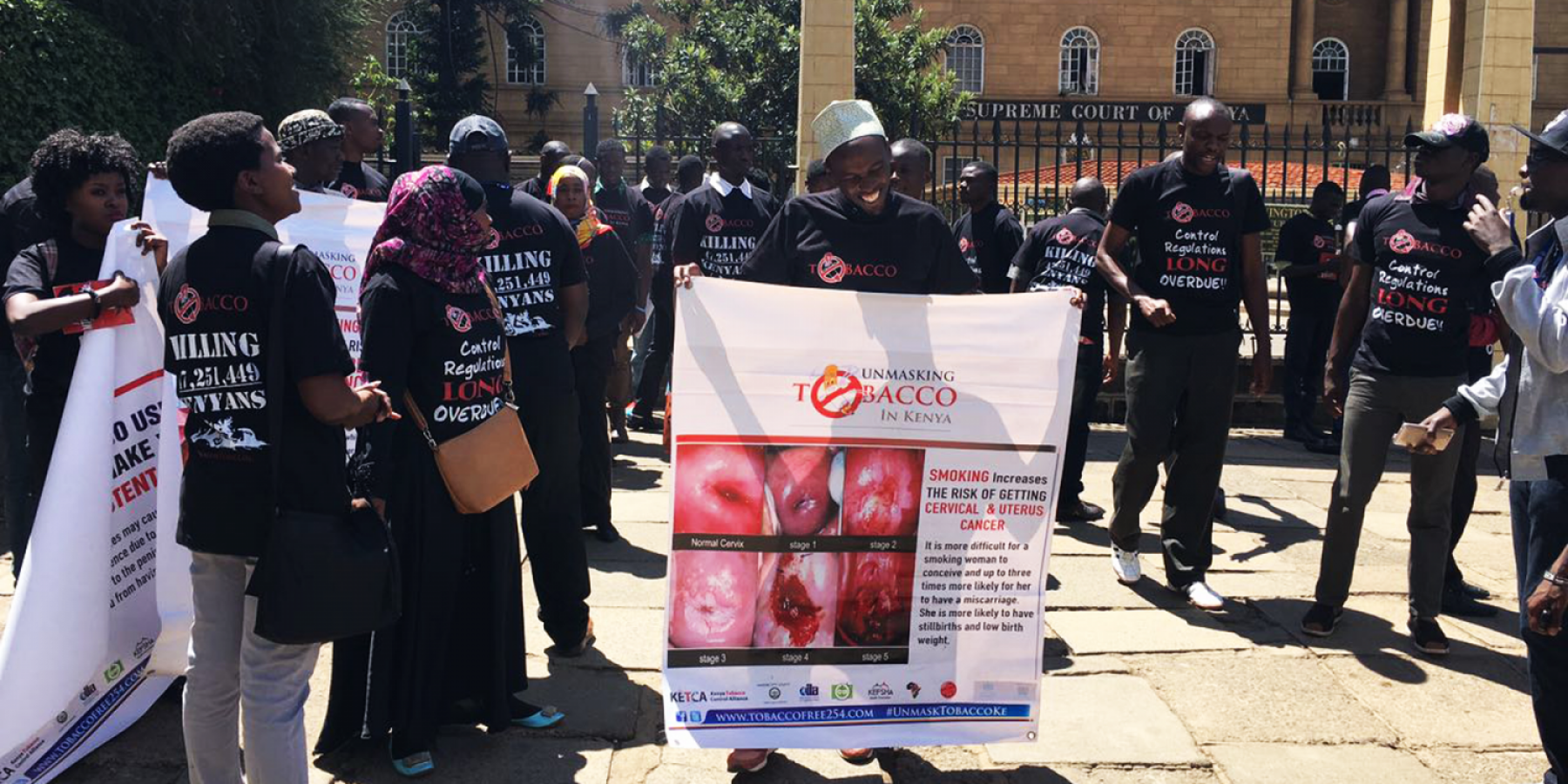What does the recent ruling on tobacco control regulations mean for the fight against NCDs in Kenya?
28th February 2017

28th February 2017
Tobacco is the most preventable cause of death globally and has been singled out as one of the major risk factors for Non-Communicable Diseases (NCDs). Owing to this, a global NCDs agenda of reducing up to 30% of prevalence of tobacco use from people 15+ years by 2030 was set within the Sustainable Development Goals. According to Kenya STEPwise, a survey conducted in 2015 to collect information on the risk factors for NCDs, it is estimated that up to thirteen percent (13%) of Kenyans currently use some form of tobacco products. About ten percent (10.1%) of this population uses smoked tobacco products such as cigarettes, pipes and shisha, while the remaining three percent (3%) use smokeless tobacco.
Furthermore, it is estimated that nearly twenty-one percent (20.9%) of Kenyans are exposed to second hand smoke at home and work. These are indeed alarming statistics given the disturbing burden of NCDs in Kenya. On Thursday January 5, 2017, The Acting Director of World Health Organization’s (WHO) NCD cluster, and WHO’s Regional Director for Africa, Dr Matshidiso Moeti decried the increasing burden of NCDs in Africa stating that heavy reliance on tobacco use was among the major causes of the rising NCDs and related deaths in the continent.
The Tobacco Control Regulations 2014, give a greenlight to regulation of packaging and labelling of tobacco products manufactured locally or imported. Tobacco companies in Kenya are mandated by the regulations to print pictorial health warnings (PHWs) on both sides of their cigarette packs. Having explicit graphical/ pictorial health warnings depicting health effects of tobacco use have been lauded as an effective way of encouraging tobacco smokers to quit smoking and discouraging others from starting the habit.
Involuntary exposure to second hand tobacco smoke is also a major concern to the fight against NCDs. With nearly twenty one percent of Kenyans involuntarily exposed to second hand tobacco smoke, there has been a sharp rise of NCDs among children, people living with disability and those living with AIDS. Effective implementation and enforcement of the Tobacco Control Regulations will protect the general public against exposure to second hand tobacco smoke in public places, and distinct private places where children and other vulnerable people could be exposed to tobacco smoke.
Incapacitation in the fight against NCDs in Kenya and in Africa has largely been attributed to low prioritisation of NCDs within the national agenda. This has in turn affected how resources are being allocated to NCD programs in Kenya, as well as the rest of the continent.
The Tobacco Control Regulations 2014, shine some rays of hope. In a quest to curb the rising negative health effects of tobacco use, these regulations have strongly highlighted provisions for the tobacco companies to justifiably take on the responsibility of dealing with these effects and costs to society. The regulations outline strong provisions for the tobacco companies to mandatorily contribute annually to the Tobacco Control Fund (TCF), through which the Ministry of Health is able to set up structures to support cessation programs, as well as conducting research especially on chronic conditions resulting from heavy reliance on tobacco use.
The tobacco industry sees the regulations as a threat to their business and income streams, which have increasingly focused on growing markets in Africa. Since before the implementation of the Tobacco Control Act of 2007, the industry has fought legislation in court, a test of our government’s financial resources, commitment to health, and resilience.
On Friday February 17, 2017 a major ruling was made by the Kenya’s Court of Appeal upholding the Tobacco Control Regulations 2007 and disqualifying an appeal case lodged by British American Tobacco (BAT) and Mastermind Tobacco Kenya Limited. Earlier BAT had prevented the Tobacco Control Regulations 2014 from coming into effect in June 2015 through a legal process at the High Court challenging the constitutionality of the regulations. In March 2016, the High Court made a judgement in favour of the regulations which BAT opted to appeal, faulting the judgement by the High Court. They just would not sit back and accept the rule of court, and health advocates again ramped up in efforts to resist the appeal and ensure that the right to health was protected.
For all these gains to be enjoyed, there needs to be
We hope that BAT’s appeal was the industry’s final assault on regulations designed to align with the FCTC, and in doing so protect the health of Kenyans today and into the future. We recognise the determination of the tobacco industry to disrupt and interfere using any means to protect their business. We stand vigilant to hold them at bay, and support the government and health sector in efforts to prevent tobacco related harm in Kenya. We also hope that our story inspires other governments and health advocates taking on the tobacco industry in court – it can be done, indeed – it must.
Achieng Otieno (@sachieng) is Communication and Digital Advocate for Kenya Tobacco Control Alliance (KETCA) (@KETCA1). KETCA is a not-for-profit organisation that brings together civil society organisations advocating for tobacco control in Kenya. KETCA is a member of the NCD Alliance in Kenya (NCDAK). The victory over BAT and Mastermind Tobacco were a result of collaborative effort from various stakeholders within the country and beyond, and for that KETCA expresses appreciation to supporters.